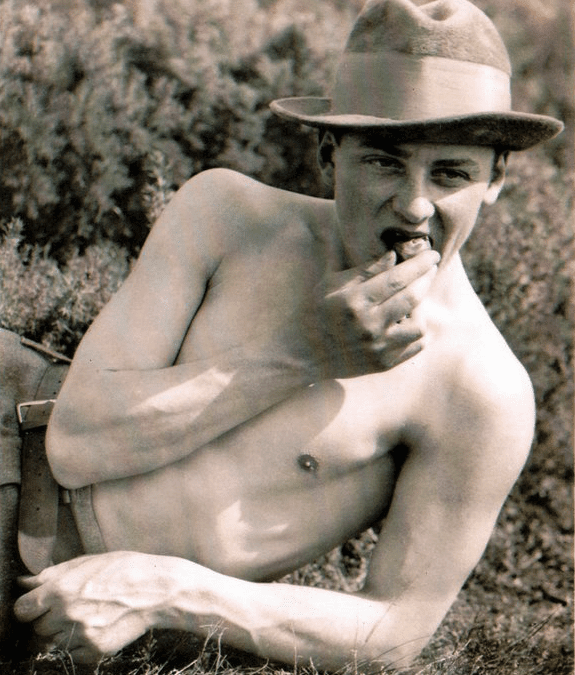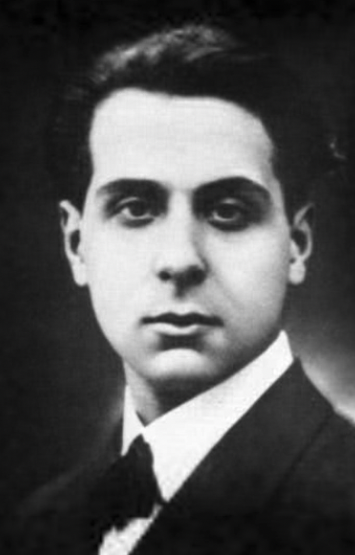This paper was delivered at the 30th international scientific conference, ‘The Historical Past and the Present in European and American Literature and Culture’, hosted (in-person and online) by Minsk State Linguistic University, 4th-5th November 2023.
By way of characterising this conference, which was being hosted by a country at a time when it was more-than-usually diplomatically and practically isolated from the West: there was one fully Anglophone panel, my own, of which the presenters were from universities in Marburg, Dublin, Wroclaw, London, Islamabad and Minsk. There was one Belarussophone panel. Neither was given any timetabling preference over the other panels, all of which were Russophone. There were equal numbers of speakers from Belarussian, and Russian, universities. The chair of my panel, and a plenary speaker on Saturday morning, was Yuri Stulov, who had for years been the Chair of the World Literature Department at MSLU. His paper was on ‘Genre Peculiarities of Contemporary African American Historical Fiction’ in English. The one participant from a Moldovan university was presenting in English and seemed to be an American; he spoke on ‘Malcolm X, Maurice Clarett, and Autobiographical Depictions of Trauma’. The first plenary presentation was by Marina Rogachevskaya, the host department’s senior academic, a Lawrencian and a specialist in psychoanalytic criticism; she presented on ‘Historical Novel and the Study of Consciousness: Bring Up the Bodies by H. Mantel’.
My own paper was as follows:
It’s great to be with you – thank you for having me – not least because international academic conversation should continue whatever the geopolitical circumstances.
David Copperfield, Dickens’s semi-autobiographical novel of 1849-50, and Engleby, Sebastian Faulks’s rather less-autobiographical novel of 2007, may at first glance have little in common. Mike Engleby is an unreliable narrator with a personality disorder who fails to tell the reader that he has murdered someone until fifteen years after the event, and ends his narration in a psychiatric hospital, whereas David Copperfield ends his story as a successful, happily married, novelist.
Nonetheless, both novels have auto-narrators who look back on traumatic childhoods in which they suffered poverty and were bullied at school: Engleby’s Chatfield, based on Faulks’s own Wellington College, and Copperfield’s Salem House, based on Dickens’s Wellington House Academy, are both Victorian institutions. Engleby exists in dialogue with the English Bildungsroman genre of which David Copperfield is such an important example. And if Copperfieldexemplifies Franco Moretti’s generalisation about the European Bildungsroman being intrinsically optimistic in the first half of the nineteenth-century, and more pessimistic in the second half, then the twenty-first century anti-Bildungsroman Engleby belongs to and extends that pessimistic phase.
Since these are novels of Bildung, and this is a conference on istoria i sovremennost in literature, I will be comparing the novels less directly than by means of a ratio. As the critic Crookshank argued, ‘scrupulous criticism’ ‘forbids the possibly fortuitous resemblance between two several data detached from their circumstances being taken as significant’; in the comparative methodology … the guiding principle will be analogy … the equality between two ratios: A is to B as Y is to Z’.
That is, I will be comparing the negotiations made by these novels’ narrators between the time of narration and the being narrated – a gap common to most Victorian and many post-Victorian novels. The temporal gaps are generally smaller in the case of Engleby, who starts his diaristic narrative when he is only an undergraduate, but he continues it until he is in his fifties, as Faulks was when creating him. David Copperfield is narrated entirely from its end point, when Copperfield and Dickens were in their late thirties. Nonetheless, the ratios are sufficiently close as to yield interesting comparisons.
One issue the novels share is that of the recoverability of the past.
Both protagonists are stressed as having excellent memories: David’s memory of the novels he has read is sufficiently good that he can retell their stories to Steerforth. At certain moments he emphasises that: ‘If the funeral had been yesterday, I could not recollect it better.’ Engleby’s remarkable memory is commented on by the psychiatrists who eventually treat him, and after he has given away a diary he had stolen from the woman he murdered he remains capable of recounting their entries in what we are encouraged to trust is a word-perfect manner.
Neither Dickens nor Faulks claimed to possess such memories, and we assume that they had to research the period of their childhoods in order to match their protagonists’ period accuracy, such as could be best judged by readers older than themselves, who had seen the periods concerned with adult eyes.
That said, childish perception is rendered as such by the protagonists. David starts his account with his earliest perceptions:
‘The first objects that assume a distinct presence before me, as I look far back, into the blank of my infancy, are my mother with her pretty hair and youthful shape’ 61
Moreover both protagonists have experienced trauma in a way that affects their ability to recall. As Engleby says: ‘My memory’s odd like that. It’s big on detail, but there are holes in the fabric.’ Though intellectually he believes that all times are one, he cannot experience them as such. At one point: ‘I was pushing, with all my might, at the thin door into the past. It was so flimsy, so transparent. Why couldn’t I just go through it? Christ, how much willpower would it take? I could picture my brain cells groaning with the effort. Compared to all the things we can and do achieve, how difficult can this really be? To do what we know is possible: to be in time as it truly is – non-linear’. There are some matters about which he, and we, remain uncertain – for example whether he also killed a second woman, Gudrun Abendroth.
The protagonists’ uncertainty in recollecting parts of their pasts is paralleled by the various names they have been given over time: David Copperfield, David Murdstone, David Trotwood and Brooks of Sheffield; Mike Engleby, Toilet, Groucho, Irish Mike, Mike (!), Prufrock, Michèle Watts, M.K. Watson and Wilson. If they change their identities over time how can one access the past of another?
Though both have patriarchal attitudes – including by the standards of their times – they are themselves frequently feminised: at school David is called Daisy, and seems erotically drawn to Steerforth, whilst Mike is sexually humiliated by older pupils. This childhood vulnerability remains with them, a flaw in their manhood, and therefore also in their ability to describe that very vulnerability. Dickens started writing an autobiography soon before writing David Copperfield, but broke it off because he found his unrequited love for Maria Beadnall too painful to recall; he displaced these memories onto a fictional protagonist, whom he gives the satisfaction of gaining, and then seeing beyond, Dora Spenlow. Faulks likewise displaced his experience of bullying at Wellington onto a character who is dissociated from it.
That said, both novels are also, amongst other things, portraits of the artists as young men. We see the growth of both protagonists into journalists, and in Copperfield’s case into novel-writing. As journalists they develop those skills in chronicling their own times which they bring, as far as their trauma allows them to, to their autobiographies. In neither case is an explanation given as to why these autobiographies are presented as novels, but the effect is to confess the works’ fictionality, whilst assuring us that we are in the hands of skilled writers who have the ability to conjure the past (though some readers doubt that David Copperfield, as presented as a character, could in fact have written the novel of that name, his skills but not his temperament being so particularly Dickensian).
In conjuring the past, they seem for the most part unconscious about the otherness of the past. In contrast to Dickens’s contemporary George Eliot, whose narrators repeatedly point to the thirty-year gap between the time of writing and setting, Copperfield and Engleby to a large extent allow the settings to emerge in their own time – just as costume drama adaptations of Victorian novels, such as David Copperfield, attempt to efface the time of their production as well as Dickens’s time of writing, in order to land the viewer solely in, for example, the 1820s. In Copperfield there is no such self-consciousness about changes in fashion as we find in Dickens’s more historical novel, Barnaby Rudge, which others (and ended up creating a craze for) Dolly Varden’s 1780s fashion. Faulks is known for his meticulous historical fictions, many set during the world wars, and, as in those, in Engleby the period detail is accurately, and largely unself-consciously, given.
That said, in some respects Engleby’s world seems to have changed more between childhood and middle age than is true of Copperfield. There is less inflation in the earlier novel, whereas in Engleby the 1970s prices seem absurdly low by 2007 or subsequent standards. Other palpably dated aspects of the 1960s and 70s, as read from the twenty-first century, include fagging and appalling bullying in a public school context – this was a reality no longer by Engleby’s end point but not, of course, Copperfield’s; a sense of the proximity of the Second World War, excitement at girls appearing in men’s Cambridge colleges, uncomfortable heating and sanitary facilities in Colleges, rocker fashions and long hair, Indians and Pakistanis felt as newcomers in London, a hard drinking culture in journalism, phones with dials, black and white television, strikes, electricity shortages, and Cold War anxiety.
Yet it is by definition hard to know to what extent the modern reader’s greater sense of the historicity of Engleby’s past, compared to Copperfield’s, is due to the reader’s greater familiarity with modern history; it takes knowledge beyond experience to apprehend the differences between the eighteen-teens and 40s. For example, that the stagecoaches in which Copperfield the child does his travelling were by the time of his adulthood being replaced by trains; that the exploitation of child labour such as Copperfield endures was progressively restricted by law over the course of the 1840s; that the Marshalsea Prison where Mr Mcawber, like Dickens’s own father, was imprisoned for debt, closed seven years before Copperfield’s time of narrating, by which time Bow-Street officers had become a Metropolitan police force, and the Old London Bridge on which the child Copperfield spends time had been demolished, in 1831. The child Copperfield is still surrounded by Regency fashions such as wigs, and ‘what I believe would be called a mob-cap; I mean a cap, much more common then than now, with side-pieces fastening under the chin’ (249). Moreover Copperfield was serialised over 19 months in 1849-50, so the earliest events narrated receded further into the past over time, and history was, to the reader, palpably in motion. The apparent datedness of the world of Engleby is therefore largely a perspectival illusion, and in another century readers of both novels may well sense their greater parity in this regard.
Before finishing I’d just like to return to the point I made at the beginning, about optimism versus pessimism in earlier versus later English Bildungsromans. As John Carey notes, behind Dickens’s ‘defenceless children – David or Pip – there stands, smiling, the secure adult writer.’ Though Copperfield’s occasional prolepsis is not always positive – for example, when he meets Steerforth: ‘No veiled future dimly glanced upon him in the moonbeams’ , by the end the evil are punished, and there is the happy solution of emigration to Australia for several of the characters – a push for which was being done in England at the time.
Engleby, on the other hand, not only completes his diary in a secure psychiatric hospital, but explicitly rejects the idea of progress. In one memorable passage Engleby instructs his readers not to patronise ‘the seventies’, which his present-tense, diaristic narration is inhabiting: ‘Don’t patronise me if you read this thirty years on, will you? Don’t think of me as old-fashioned, earing silly clothes or some nonsense like that. Don’t talk crap about ‘the seventies’, will you, as we now do about ‘the forties’. I breathe air like you. I feel food in my bowel and a lingering taste of tea in my mout. I’m alive, as you are. I’m as modern as you are, in my way – I couldn’t be more modern … Yours are in fact my atoms, reunsed. And you too, on your front edge of breaking time, Mr 2003, will be the object of condescending curiosity to the future – to Ms 2033. So don’t patronise me. (Unless of course you have completely overturned nad improved my world, bringing peace and plenty, and a cure for cancer and schizophrenia, and a unified scientific explanation of the universe comprehensible to all … In which case you would be permitted to patronise primitive little 1973. Well, have you done those things? Got a cure for the common cold yet? Have you? Thought not. How’s your 2003 world, then? A few wars/ Some genocide? Some terrorism? Druges? Abuse of children? High crime rate? Materialistic obsessions? More cars? Blah-blah pop music? Vulgar newspapers? Porn? Still wearing jeans? Thought so. Yet you’ve had an extra thirty years to sort it out!)’
Moreover Engleby thinks ‘Something happened to this country, perhaps in the 1960s. We lost the past … There is no sense of connection to it now … Now you walk those same streets [in Reading] and it seems as though it’s all a sham, a play or a quotation.’
That said, Engleby is surprised by some progress which he had not predicted, such as the end of apartheid and of the Cold War. He is not necessarily aware of the change in his school, as was effected in its original by the twenty-first century headmaster Anthony Seldon, but he does experience the mental health care system, in which he is likely to spend the rest of his life, as humane.
By the time he reaches the 1980s, he states ‘I feel a bit nostalgic at the thought of that era coming to an end … I grew up expecting to die in a nuclear war.’
Sadly, Faulks could not know, writing the novel in 2007, that a time of concern over such a fate was to return, and that the optimism of the first decade of the twentieth century was greater than that of the decade which followed. Faulks has lived to see that, whereas Dickens did not live to see that rising threat to European peace which came with the rise of rivalry with Germany after his own death in 1870. Insofar as both novels recognise progress, therefore, both have been retrospectively ironised.




